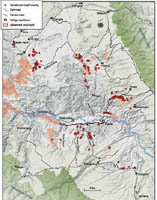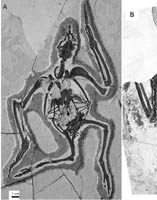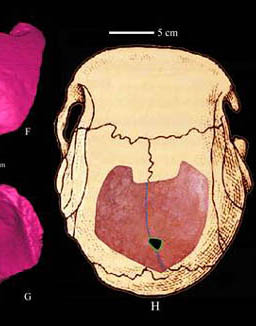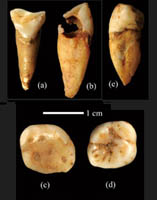 |
New Homonin Site Found in Daoxian County, Hunan Province of China |
| A joint team from Institute of Vertebrate Paleontology and Paleoanthropology (IVPP), Chinese Academy of Sciences, Institute of Cultural Relics and Archaeology, and Office for Cultural Relics Administration of Daoxian County, unearthed five hominin teeth and a large number of mammalian fossils from the Fuyan Cave sit... |
|
|
|
|
|
|
|
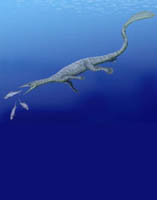 |
A New Thalattosaur Found From the Upper Triassic of Guanling, Guizhou, China |
| Thalattosaurs, literally meaning “ocean lizard”, are a group of prehistoric marine reptiles living during the Triassic Period in North America and Eurasia. They bore a superficial resemblance to lizards, but the exact relationships of thalattosaurs is unclear. Paleontologists from Institute of Vertebrate Paleontol... |
|
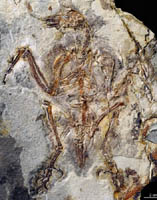 |
New Enantiornithine Bird With Ornamented Tooth Enamel Found From Liaoning, China |
| Enantiornithes is an extinct group of primitive birds, and almost all retained teeth and clawed fingers on each wing. Although the teeth range in overall morphology, caudal curvature, lateral compression and size, no previous specimens have preserved any other form of dental ornamentation. Scientists from Institute ... |
|
|
|
|
|
|
|
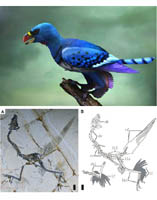 |
New Finding Confirmes the Presence of a Four-winged Condition in Early Birds |
| Recent discoveries of large leg feathers in some theropods have implications for our understanding of the evolution of integumentary features on the avialan leg, and particularly of their relevance for the origin of avialan flight. However, no examples of this unusual structure have so far been reported in early pri... |
|



